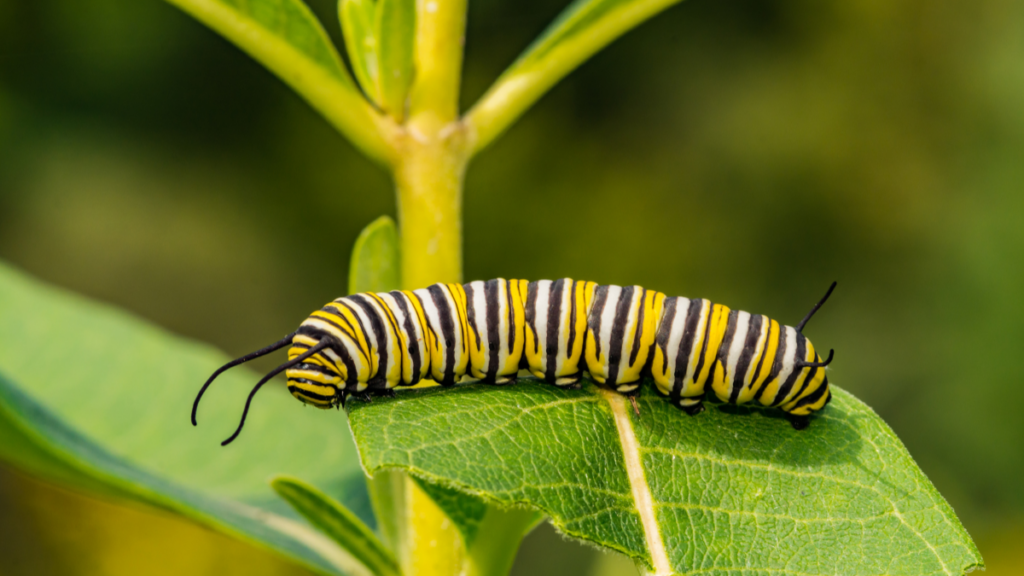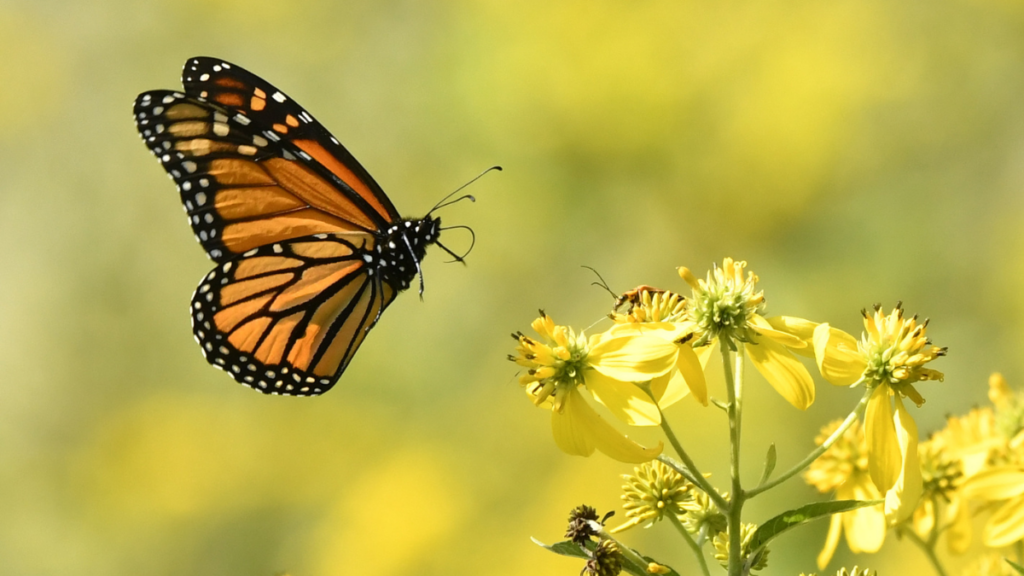Bug Wrangler Brenna here with a special edition of Notes from the Lab. I’m the type of person who goes full bore into the holidays, and unfortunately, the common cold is spreading along with all this season’s Christmas cheer. So, in lieu of today’s Online Bug Encounter, I’m bringing you a special edition of Notes from the Lab to share exciting news from the realm of insect conservation: Yesterday, the US Fish and Wildlife proposed to list the monarch butterfly (Danaus plexippus) as threatened under the 1973 Endangered Species Act.
We often refer to the monarch butterfly as the poster child for insect conservation. Its striking orange and black patterning is easily recognizable, and it is regularly touted as a model insect to teach students about life cycles and wildlife migration. “The iconic monarch butterfly is cherished across North America, captivating children and adults throughout its fascinating lifecycle. Despite its fragility, it is remarkably resilient, like many things in nature, when we just give them a chance,” said US Fish and Wildlife Service Director Martha Williams.
Monarch conservation efforts have been underway since the mid-1980s, but unfortunately, populations of both western and eastern migratory monarchs are declining at an unsettling pace. Current reports estimate that the western migratory population – which is found west of the Rockies and includes the monarchs we see in Missoula – has declined by over 95% since the 1980s and could experience extinction by 2080 if something doesn’t change. So, how will listing the species improve conservation efforts?

The US began experiencing (or at least noticing) rapid biodiversity loss in the early 1900s, with paramount species like the American bison and whooping crane reaching critical population thresholds and the sudden extinction of the passenger pigeon, which once numbered in the billions and was considered the most abundant bird in North America. In the following decades, attempts to conserve declining species fell short, and in 1973, Congress introduced the Endangered Species Act at the behest of President Nixon, who recognized conservation efforts at the time as inadequate. The new piece of legislation required comprehensive recovery plans for species listed as threatened or endangered. No longer was it simply enough to maintain what was left of these species; the onus fell on the federal government to enact plans that would actively recover populations to the point that they no longer needed to be listed.
One of the aspects of the ESA that gives it legislative teeth is the designation of “critical habitat.” While the ESA makes it illegal to “take” a listed species (as in kill, harm, or harass) as well as trade listed species, it also states that federal agencies cannot engage in “the destruction or modification of [critical habitat of threatened or endangered species].” Likewise, private landowners who need a federal permit for development will have to work in accordance with the US Fish and Wildlife Service to mitigate habitat damage. As part of the monarch’s proposed listing, the US Fish and Wildlife Service has designated 4,395 acres of critical habitat across several California counties, where the western populations overwinter.

Listing the monarch butterfly is a huge step in the right direction, but the fight doesn’t end there. As US Fish and Wildlife Service Director Martha Williams puts it, “[T]his proposed listing invites and builds on unprecedented public participation in shaping monarch conservation efforts. Providing monarchs with enough milkweed and nectar plants, even in small areas, can help put them on the road to recovery. Working together, we can help make this extraordinary species a legacy for our children and generations to come.”
The proposal to list the monarch and designate critical habitat will be published in the Federal Register on December 12th. At that time, a 90-day period will open for public comment. So remember to keep up the good fight: plant native milkweed, avoid pesticides at all costs, and make your voice heard for the legendary insect icon we all know and love.